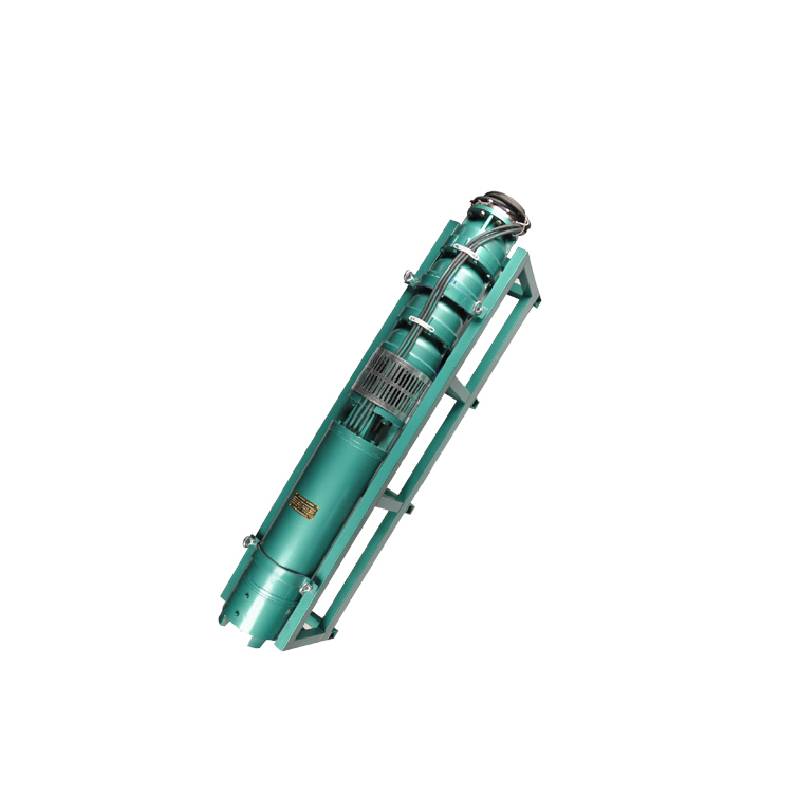Dec . 14, 2024 23:28 Back to list
Dry Run Testing for Submersible Pumps and Its Importance in Performance Evaluation
Dry Run of Submersible Pumps Understanding the Risks and Mitigation
Submersible pumps are widely used in various applications, including groundwater extraction, sewage treatment, and industrial processes. Their ability to operate underwater makes them highly efficient for transferring fluids from one location to another. However, one critical concern for maintaining the performance and longevity of these pumps is the risk of a dry run. A dry run occurs when a pump operates without sufficient fluid, leading to potential damage and failure. This article explores the causes of dry runs, their implications on submersible pumps, and strategies to mitigate the associated risks.
What is a Dry Run?
A dry run in the context of submersible pumps involves the situation where the pump is activated without any fluid to pump. This may happen due to several reasons, such as a sudden drop in the water level, a malfunctioning float switch, or a blocked inlet. When the pump runs dry, it cannot properly cool itself, which can lead to overheating and damage to critical components, including seals, bearings, and the motor.
Causes of Dry Runs
1. Low Fluid Levels One of the primary causes of dry running is the depletion of fluid, which can occur due to seasonal changes, excessive pumping, or leaks in the system. 2. Faulty Sensors Submersible pumps are often equipped with level sensors to monitor fluid levels. If these sensors fail or provide inaccurate readings, the pump may operate erroneously.
3. Clogs and Blockages Blockages in the pump's intake can prevent fluid from entering, leading to dry running even when the fluid level appears adequate.
4. Installation Errors Improper installation can also lead to dry running. For example, if a pump is installed too high in a well or reservoir, it may not reach the water level.
Implications of Dry Runs
Running a submersible pump dry can lead to several adverse outcomes
1. Mechanical Damage The absence of fluid for lubrication and cooling can cause critical components to overheat, leading to mechanical failures. This can include burned-out motors or damaged impellers.
2. Increased Maintenance Costs Damage from dry running often leads to costly repairs or even the need for pump replacement, significantly increasing overall maintenance expenses.
dry run submersible pump

3. Operational Downtime When a pump fails due to a dry run, it results in unexpected downtime. This can disrupt processes in industrial applications or create service delays in municipal water management.
4. Safety Hazards Overheating components can pose fire risks or lead to hazardous material leaks, creating safety concerns for personnel and the surrounding environment.
Mitigation Strategies
To prevent dry runs and ensure the longevity of submersible pumps, several strategies can be employed
1. Level Monitoring Systems Installing reliable float switches or level sensors can ensure accurate fluid level monitoring. Advanced systems can provide real-time alerts when fluid levels drop below a certain threshold.
2. Regular Maintenance Routine inspections and maintenance can help identify potential issues before they lead to a dry run. This includes checking for blockages, corrosion, and sensor functionality.
3. Proper Installation Ensuring that the pump is correctly installed at the recommended depth can prevent issues with low fluid levels. Consulting with professionals during installation can help avoid common pitfalls.
4. Variable Speed Drives Implementing variable speed drives can allow for better control over the pump’s operation, adjusting flow rates based on real-time fluid levels and preventing dry running situations.
5. Backup Systems In critical applications, having backup pumps or alternative fluid transfer methods can provide an essential safety net. This can minimize the consequences of a dry run incident.
Conclusion
While submersible pumps are essential for many applications, understanding and mitigating the risks associated with dry running is crucial for their reliability and longevity. By implementing appropriate monitoring systems, performing regular maintenance, ensuring proper installation, and employing advanced technology, operators can significantly reduce the risk of dry runs, safeguarding their equipment and operations against potential failures. Proper awareness and proactive measures can lead to efficient pump operation and reduced costs over time.
-
Submersible Water Pump: The Efficient 'Power Pioneer' of the Underwater World
NewsJul.01,2025
-
Submersible Pond Pump: The Hidden Guardian of Water Landscape Ecology
NewsJul.01,2025
-
Stainless Well Pump: A Reliable and Durable Pumping Main Force
NewsJul.01,2025
-
Stainless Steel Submersible Pump: An Efficient and Versatile Tool for Underwater Operations
NewsJul.01,2025
-
Deep Well Submersible Pump: An Efficient 'Sucker' of Groundwater Sources
NewsJul.01,2025
-
Deep Water Well Pump: An Efficient 'Sucker' of Groundwater Sources
NewsJul.01,2025
-
 Submersible Water Pump: The Efficient 'Power Pioneer' of the Underwater WorldIn the field of hydraulic equipment, the Submersible Water Pump has become the core equipment for underwater operations and water resource transportation due to its unique design and excellent performance.Detail
Submersible Water Pump: The Efficient 'Power Pioneer' of the Underwater WorldIn the field of hydraulic equipment, the Submersible Water Pump has become the core equipment for underwater operations and water resource transportation due to its unique design and excellent performance.Detail -
 Submersible Pond Pump: The Hidden Guardian of Water Landscape EcologyIn courtyard landscapes, ecological ponds, and even small-scale water conservancy projects, there is a silent yet indispensable equipment - the Submersible Pond Pump.Detail
Submersible Pond Pump: The Hidden Guardian of Water Landscape EcologyIn courtyard landscapes, ecological ponds, and even small-scale water conservancy projects, there is a silent yet indispensable equipment - the Submersible Pond Pump.Detail -
 Stainless Well Pump: A Reliable and Durable Pumping Main ForceIn the field of water resource transportation, Stainless Well Pump has become the core equipment for various pumping scenarios with its excellent performance and reliable quality.Detail
Stainless Well Pump: A Reliable and Durable Pumping Main ForceIn the field of water resource transportation, Stainless Well Pump has become the core equipment for various pumping scenarios with its excellent performance and reliable quality.Detail
